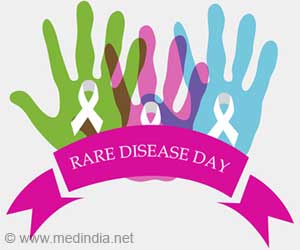Living in rural areas is linked to a higher risk of heart failure, with rural Black men being the most vulnerable group.
- Adults living in rural areas in the US have a 19% higher risk of developing heart failure than those living in urban areas
- Black men and women living in rural areas have a higher risk of heart failure compared to their urban counterparts
- White women living in rural areas have a 22% higher risk of heart failure than white women living in urban areas
Rural Living Linked to Higher Risk of Heart Failure
According to the Centres for Disease Control and Prevention, those living in rural areas are more likely than those living in cities to die from heart disease, cancer, unintentional injury, chronic lower respiratory disease, and stroke. An extensive observational study published in the journal JAMA Cardiology by researchers at the National Heart, Lung, and Blood Institute (NHLBI) and Vanderbilt University Medical Centre in Tennessee, U.S. adults living in rural areas have a 19% higher risk of developing heart failure than adults living in urban areas. According to the researchers, this is the first study to look at the relationship between residing in rural America and first-time cases of heart failure.Dr. Véronique Roger, the study's corresponding author and a senior investigator with the Epidemiology and Community Health Branch in the NHLBI's Division of Intramural Research, said that she previously worked with a team that studied heart failure in rural Minnesota — a population that was approximately 95% white.
"So, we were interested in looking at the intersectionality between rurality and race," she explained.
How the Rural Heart Disease Study Was Carried Out
The study included 27,115 participants from the Southern Community Cohort Study (SCCS). Participants in that study were recruited from Alabama, Arkansas, Florida, Georgia, Kentucky, Louisiana, Mississippi, North Carolina, South Carolina, Tennessee, Virginia, and West Virginia beginning in 2002.Approximately 86% of those people were recruited from community health centres that serve medically underserved communities. About 20% of the SCCS participants chosen for this study lived in rural areas. Only participants who identified as Black or non-Hispanic white were included in this study since there were too few participants from other racial and ethnic groupings, as the researchers explain in their report.
Approximately 69% of those chosen were Black. The average age of the participants was 54. Only those who did not report having heart failure at the start of the trial were chosen. Researchers discovered that rural participants had slightly higher BMIs and rates of hypertension, diabetes, cardiovascular disease, and hyperlipidemia than their urban counterparts.
Rural populations reported similar stroke rates to their urban counterparts but lower rates of depression. Diet and exercise habits were comparable between the two groups. Rural individuals were less likely to be current smokers, married, and have a lower level of formal education.
Rural Black Men Are at A Higher Risk of Heart Disease
Participants encountered 7,542 heart failure episodes between the start of the trial and a median follow-up of 13 years. Heart failure occurs when the heart does not adequately pump blood throughout the body. Shortness of breath during regular activity or difficulty breathing when lying down are symptoms.There were 1,865 heart failure incidents in rural residents and 5,677 in urban residents. After controlling for age, gender, and race, as well as cardiovascular risk factors, health behaviours, and socioeconomic factors, the researchers found that adults living in rural areas have a 19% higher overall risk of developing heart failure than their urban counterparts.
Rural Black men had the highest risk of heart failure. This group was 34% more likely to develop heart failure than their urban peers. Women were likewise more vulnerable. Rural Black and white women had an 18% and 22% higher risk of heart failure than urban women, respectively.
“We addressed, as much as we could, things that we thought could be playing a role in our observation,” said Roger. “We expected that… we would find such a difference, but we did not expect the magnitude of the difference that we saw.”
Is Racism and Sexism at Work?
Keisha Ray, an assistant professor of bioethics and medical humanities at McGovern Medical School at UTHealth Houston in Texas, was unsurprised to learn that women and Black males were more likely to die from heart failure in rural locations."It is consistent with what health disparities scholars have consistently maintained—discrimination like racism and sexism touches all parts of Black people's and women's lives," she told Medical News Today. "Racism also influences access to resources needed for proper heart health, such as access to healthy foods, recreation, adequate income and housing, and preventive health care."
Because of misogyny, health professionals frequently fail to treat women seriously, according to Ray. "Women are often not believed when they complain of illness or their poor health is dismissed and downplayed,” she said. “This can affect how quickly they receive life-saving care.”
Source-Medindia
















